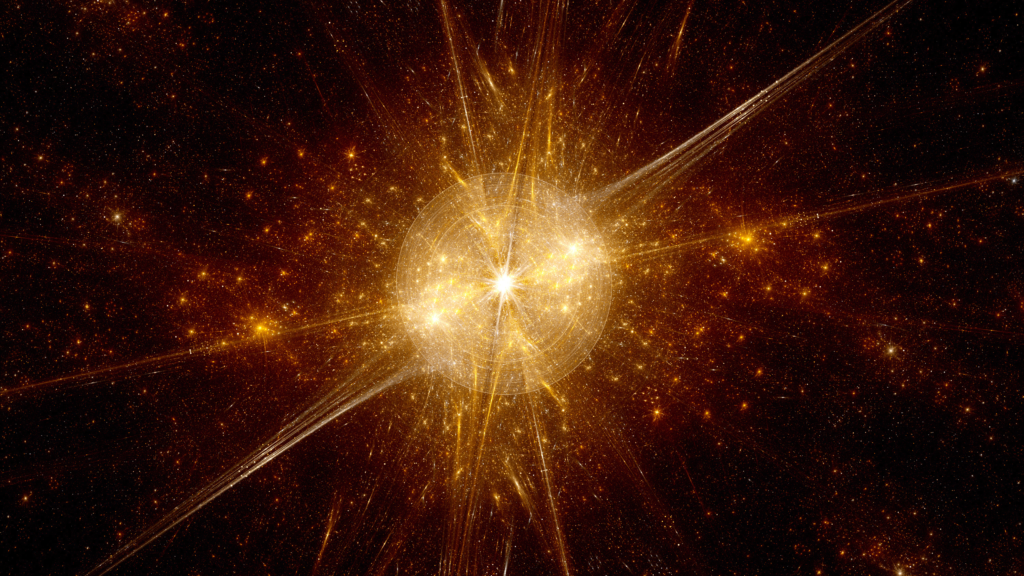James Webb Space Telescope was launched on 21st at December 2021 and six months after that its first results were released. Now it is almost one year since its new results came and there are some splendid images. So 12 days ago on the eve of its anniversary, let us talk about two beautiful images of James Webb space telescope.
James Webb space telescope
You know our universe is expanding. As you know, James Webb space telescope is 1.5 million kilometer far and it works in infrared light.

Its splendid image or results are coming for the last one year.
Now, to celebrate this anniversary I could have impressed you and I would have shown you

the images taken by James Webb space telescope of galaxies clusters or such stars which are about to explode and which are called Wolf-Rayet stars. It has taken its images.
On the pictures taken by James Webb space telescope of Jupiter and Saturn in our own galaxy or if I wanted to impress you more I would have talked about how find out about the atmosphere of exoplanets

Or how did you find out about the far away galaxies formed a few million years after the Big Bang and about the composition

Or how did James Webb space telescope take the image of the farthest star.
Recent Pictures of JWST
But no I will not share those images. I will not trying to impress you. But I will show you a recent image.
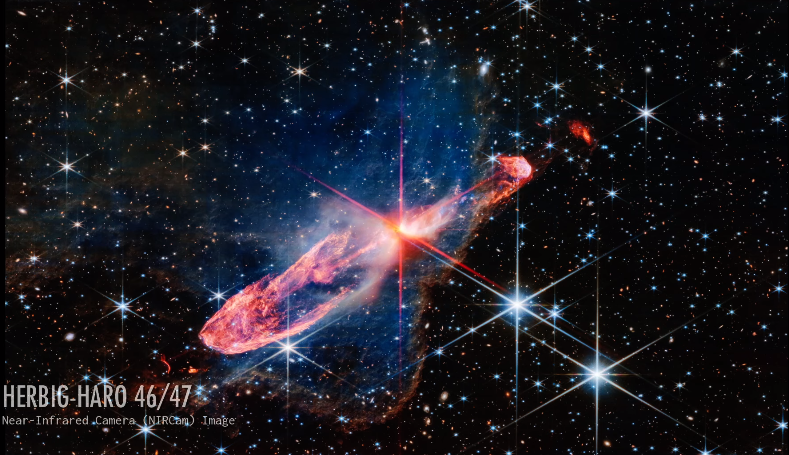
This is called HARBIC HARO OBJECT. It’s type of new stars, but this is not important.
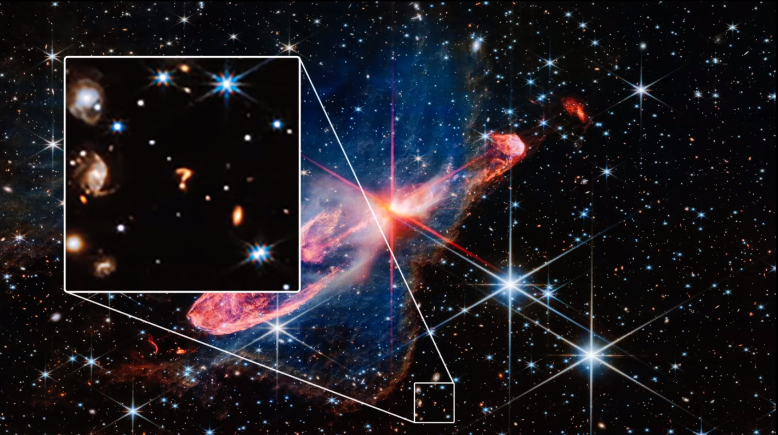
If you see a little under you will see a question mark there which has been imaged by James Webb space telescope.
It seems our universe is also raising questions what is its (universe) object and should it expand or not. This was a in a lighter mood but the astronomers think this question mark in the background is probably two galaxies, when they collected snd interacted their shape bent a little due to gravity. This is a coincident that it is looking to us like a question mark.
Two Stunning Pictures of JWST
Today I want to focus on two very beautiful pictures which were taken by James Webb space telescope.
First Image Of JWST

This is the nearest star formation region from us approximately at a distance of 400 light years. You must have seen the picture mostly, of Orion nebula and Eagle Nebula and you can check out article context.
What is RHO OPHIUCHI
This RHO OPHIUCHI is a smaller star forming region compared to them.
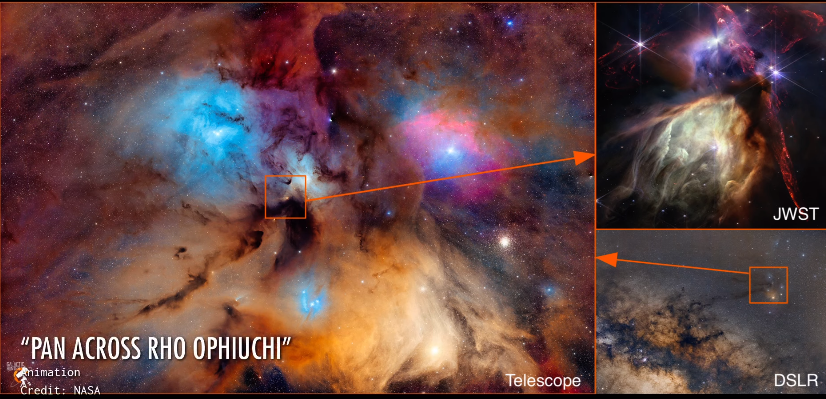
Pictures of you are seeing now a wide angle picture which is the whole area. You can see beautiful colors in it. RHO OPHIUCHI is receivable from south hemisphere and the detailed inset is telling you where has the James Webb space telescope focused on.
This picture was taken by Galactic Hunter. This is context where is the big region and where is the James Webb space telescope seeing its details.
Now about 50 stars are forming in RHO OPHIUCHI which are equal to our sun mass wise or a little less than that. Orion Nebula and Eagle Nebula contain very big stars also. But if you see this picture the first thing is you can see a lot of details in it.
The dominant things you see in the red color bi-polar jets on the right side going up and down.
Actually, when new stars are forming (we call them Proto star) during their formation this type of material is ejected which goes above and below the disc. The red color in this picture designates molecular hydrogen.
When the jets eject this sun or Proto star heats up this molecular hydrogen and because of that it gives infrared light which was captured by James Webb space telescope.
In fact this is not only one bipolar jet. If you see a little more details you can see more bipolar jets meaning these are the places where new stars equal to the mass of our sun, or are forming now.
This star is a little bigger than our sun in mass but it has crossed this bipolar phase and its heat has to some extent cleared its surroundings and it is in cavity.
The yellow colour you are seeing is another type of infrared radiation. The heat of the star has excited the dust grains. This is not human excitement.
This is only that these dust w I’m getting heated up by the light in astronomers call the dust grains ‘Poly Cycle Aromatic Hydrocarbons or PAH’s‘. As the name suggests it contains carbon and hydrogen so this type of complex molecules afterwards in a way help life (formation).
How did our sun was formed
The RHO OPHIUCHI tells us about the beginning of our sun. 4.5 billion years before maybe our sun also form in this kind of Nebula. But when we are studying RHO OPHIUCHI in a way this is telling us about our origins also.
Second Image Of JWST
Now the second image which I want to share with you is a galaxy. But before the see second picture of James Webb Space Telescope we see Hubble Image then we compared those images
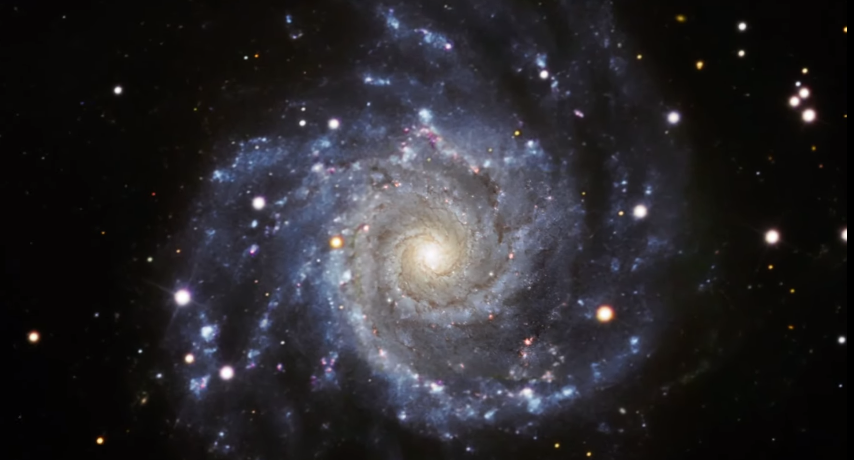
Its name is M-74 or its Messier objects is no. 74. It also has a nickname “The Phantom Galaxy”. This is a spiral galaxy. In fact it is also called grand design spiral because spiral arms can be seen with its beauty.
Image of Spiral Arms Galaxy by Hubble Space Telescope
You can trace it with a small telescope also in the northern atmosphere. It is 30 million light years away from us and in the universals distance yardstick astronomers call it a nearby galaxy.
Now, remember when you are seeing a galaxy you are not seeing some stars but at one time are you are seeing several hundred billion stars in the Milky Way there are a few hundred billion stars.
Hubble space telescope also took its pictures so first of all let’s see that picture.
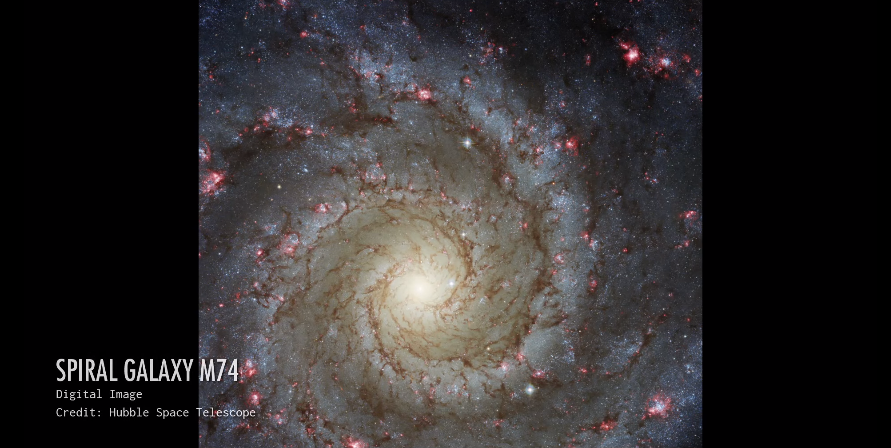
- You can see a red colored blobs in the spiral arms in the picture. These are actually star forming regions. Many stars are farming in it and in a way they trace the spiral arms.
- But you can see some dust also here very beautiful and that dust is basically absorbing light meaning you cannot see the light behind it because of the presence of dust.
- The third thing that I will point out here is you can see yellow light spread out in the central region. These are relatively old stars spread out in different areas.
Image of Spiral Arms Galaxy by JWST
Now you remember James Webb space telescope works in infrared and infrared detects dust very nicely. So are you ready for the second James Webb space telescope image

- The first thing what a spectacular picture.
- The second thing is the spiral arms where there was dust can be seen here very clearly and in all its beauty.
Compare Picture with HST and JWST
Let us compare the Hubble space telescope image and the James Webb space telescope image so we know where all the stars where is the dust and what else does it tell us.
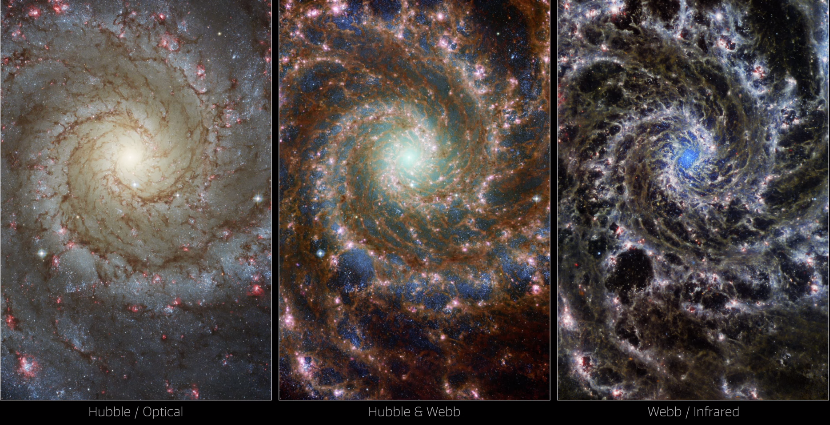
In the image you are seeing now on the left side panel is the image of the Hubble space telescope and right side panel is the image of the James Webb space telescope and a central panel shows them combined. This way if you see both the picture, if you compare them you can find a lot of things that are happening in the galaxies.
I know in this article must be on beauty but I will point out two things in the image when you compare of the images of Hubble and James Webb.
One feature is you can see a big hole below the spiral arms in the infrared image of James Webb. Remember that image of James Webb space telescope detect dust and gas. It seems gas and dust is not present in this area.
If you see the Hubble image of this area, you can see stars there but not much stars formation, so it seems, the idea of the astronomers in this area many new stars were formed and some also exploded in supernova. Their radiation and the supernova explosion cleared the gas and dust of this area. This formed a cavity and astronomers now cavities are formed in other galaxies also when new stars explode and after that the dust and gas is cleared away from there.
The second feature is its nuclear region.
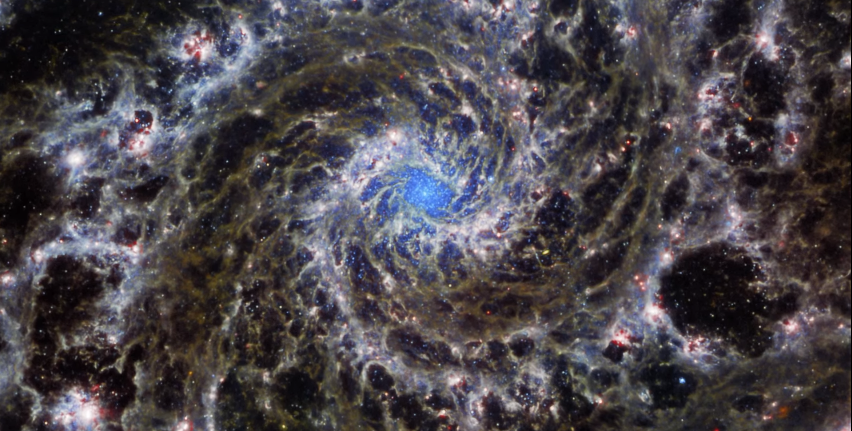
Where is there?
You can see a cluster of stars in the center and astronomers calculate it is 30 ly across. This is not very big but several hundreds of thousands of stars are present in it. This is surprising why there is no dust and gas in the central area. When astronomers calculated that age of these stars they found these stars work from 8 billion years before. This means no new stars have formed in the center of this galaxy for the last several billion years.
Why not? Why is gas and dust not present there? Because gas and dust is present in the centre of the most of the galaxies. Why new stars did not form there? What is the answer? Do not know.
This is an amazing mystery and again you can see in the Hubble space telescope image you do not see any such thing but when you explore the nucleus in the infrared image of James Webb space telescope you get to know its conditions.
Conclusion
Throughout your images I wanted to highlight what sort of result will be coming in future from the James Webb space telescope which has been working for just one year (this is only the beginning).
Specially everyone is waiting for what Phil James Webb space telescope discovered in the atmosphere of planet Trappist 1 F which is also in the habitable zone of Trappist 1 system. When its results come I will definitely make article here.
Beside the James Webb space telescope is finding out how did the first stars in the first the stars and the first galaxies of our universe form. The different results regarding this will also be received in the coming years but during this period

you appreciate and enjoy this type of spectacular image being provided by the James Webb space telescope.

